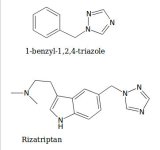entheogenic-gnosis
Rising Star
As for the potentiating effects of ULM-491 on DMT I could only speculate.
Does anyone know of any other studies involving the pharmacological interactions between other lysergamides and DMT?
there's a compound called lisuride (systematic (iupac) name:1,1-Diethyl-3-(7-methyl-4,6,6a,7,8,9-hexahydro-indolo[4,3-fg]quinolin-9-yl)-urea) which is a lysergamide antiparkisons agent, and is also used in the treatment of migraines, any way this compound has a very similar pharmocological profile to ULM-491, and I would be willing to bet that lisuride would also have potentiating effects when used as a primer to N,N-Dimethyltryptamine.
-EG
Does anyone know of any other studies involving the pharmacological interactions between other lysergamides and DMT?
there's a compound called lisuride (systematic (iupac) name:1,1-Diethyl-3-(7-methyl-4,6,6a,7,8,9-hexahydro-indolo[4,3-fg]quinolin-9-yl)-urea) which is a lysergamide antiparkisons agent, and is also used in the treatment of migraines, any way this compound has a very similar pharmocological profile to ULM-491, and I would be willing to bet that lisuride would also have potentiating effects when used as a primer to N,N-Dimethyltryptamine.
-EG

